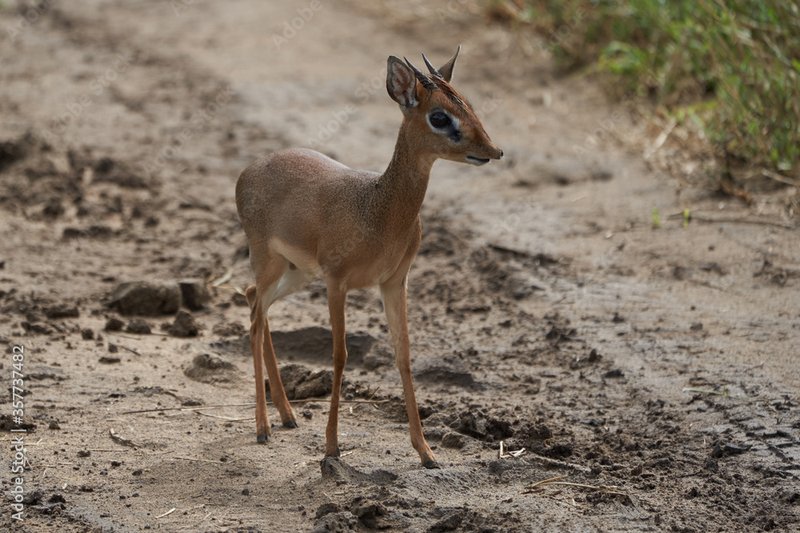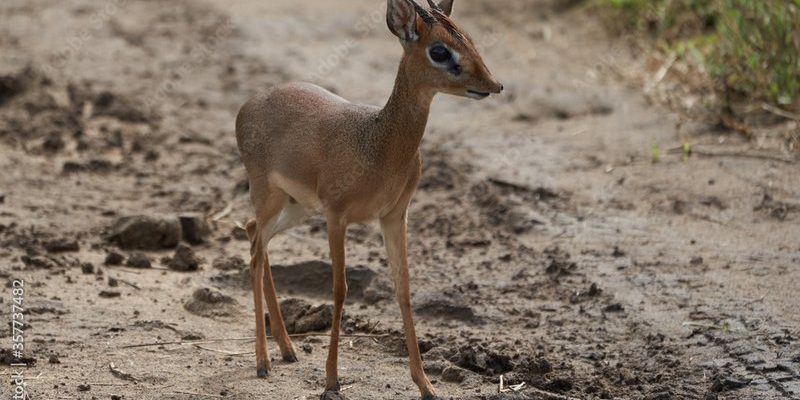
Dik-diks are small, standing about 12 to 16 inches tall, with large eyes and a charming, delicate appearance. They embody the phrase “good things come in small packages.” Like any parent, they face challenges, but their unique approach to caring for their young is a marvelous blend of instinct, adaptation, and a dash of cuteness that’s hard to overlook. Let’s dive into the world of dik-dik parenting and explore how these adorable creatures ensure the survival of their little ones in the wild.
Understanding Dik-Dik Family Structure
Dik-dik families typically consist of a monogamous pair. This means that a male and female dik-dik will mate for life, forming a strong bond that’s key to raising their young. The bond between these two isn’t just for show; it helps create a stable environment where their offspring can thrive.
Here’s the thing: dik-diks are highly defensive of their territory. They mark their territory with scent glands located near their eyes, alerting others to their presence. This behavior acts like a protective umbrella, keeping potential predators at bay. Families typically raise one calf at a time, which allows both parents to focus their care and attention on the single young dik-dik, ensuring its survival in the wild.
The Role of the Male Dik-Dik
The male dik-dik plays a critical role in parenting, even if it isn’t as obvious as in some other species. While the female primarily cares for the calf, the male is tasked with safeguarding the territory and keeping watch for any threats. You might say he’s the protector of the home front.
When a calf is born, the male dik-dik will often stand guard nearby, using their keen eyesight and excellent hearing to detect any approaching danger. This vigilant behavior is crucial, as many predators, like leopards and birds of prey, view young dik-diks as a tasty snack. The male’s presence provides a sense of security, allowing the female to focus on nurturing and feeding the calf.
Nurturing the Calf
After giving birth, a female dik-dik will hide her calf in dense bushes or tall grass. This strategy is vital for the calf’s survival during its early days. The hiding spot keeps the calf concealed from potential predators and allows the mother to feed without drawing attention.
You might be wondering how often a mother dik-dik visits her hidden young one. Surprisingly, she’ll return every few hours to nurse the calf. The nursing process is crucial, as it helps the young dik-dik gain strength and develop the energy needed to start exploring its surroundings.
Playtime: Learning Through Interaction
As the calf grows stronger, the playful antics begin. Young dik-diks are naturally curious and engage in playful behaviors, which are more than just fun—they’re essential for learning. Through play, the calf develops important skills like agility and coordination that will help it escape from predators later on.
Mother dik-diks encourage this play by sometimes joining in, nudging the young ones or leaping around them. This playful interaction fosters a strong bond between the mother and her calf, building trust and security that will last well into adulthood.
Weaning and Independence
At around three months old, a dik-dik calf begins the weaning process. This gradual shift from nursing to eating solid food is a critical period of development. The mother will introduce her calf to various plants, teaching it what’s safe to eat. Honestly, it’s like sending your kid off to college but in the wild!
During this time, the female will often take the calf along while foraging, allowing it to observe and learn about the world around it. This experience is not only educational; it’s also a vital chance for the calf to develop social skills, as it may encounter other dik-diks and wildlife along the way.
The Importance of Self-Sufficiency
By the time the calf reaches six months old, it’s typically self-sufficient. At this stage, young dik-diks start to establish their own territory, often staying close to their birth area. However, they’ll also begin to roam and explore new areas, learning to fend for themselves.
This independence is crucial for survival. As a dik-dik matures, it will face challenges such as finding food, avoiding predators, and securing a mate for future generations. The lessons learned during those formative months with their parents are invaluable in navigating these hurdles.
Challenges Faced By Dik-Diks
Despite their adorable nature, dik-diks face numerous threats in the wild. Habitat loss, primarily due to human encroachment, is one of the most significant challenges. As their habitats shrink, so do their chances of raising healthy young.
Predation is another major concern. Young dik-diks are vulnerable to a range of predators, including birds of prey and carnivorous mammals. The careful hiding strategies employed by the mothers are a testament to the intense pressures these small animals face daily.
Conservation Efforts
Recognizing the challenges faced by dik-diks has sparked conservation efforts aimed at preserving their habitats and protecting them from poaching. Community education plays a vital role in these efforts. By raising awareness about the importance of these unique creatures, we can foster a greater appreciation and support for their preservation.
Every little bit counts, from creating wildlife reserves to implementing sustainable agricultural practices. As people become more invested in protecting natural habitats, dik-diks have a better chance at raising their young without the threats that currently endanger their populations.
In the end, watching dik-diks raise their young is a beautiful reminder of the circle of life in nature. From their keen territorial instincts to the nurturing bonds they create, these little antelopes showcase the delicate balance of survival, protection, and growth in the wild.
You might wonder how something so small can have such a big impact in their ecosystem. The answer lies in their ability to adapt, nurture, and thrive against the odds. So, the next time you hear about dik-diks or see them in the wild, remember their heartwarming story of parenting and survival. These tiny antelopes truly are remarkable, proving that even the smallest creatures can make significant contributions to our natural world.

